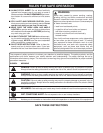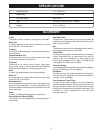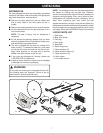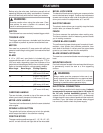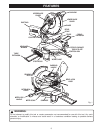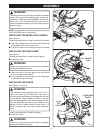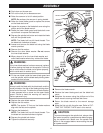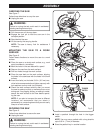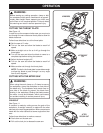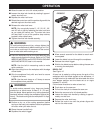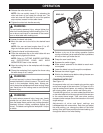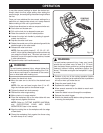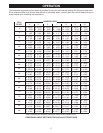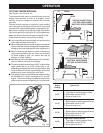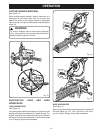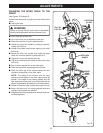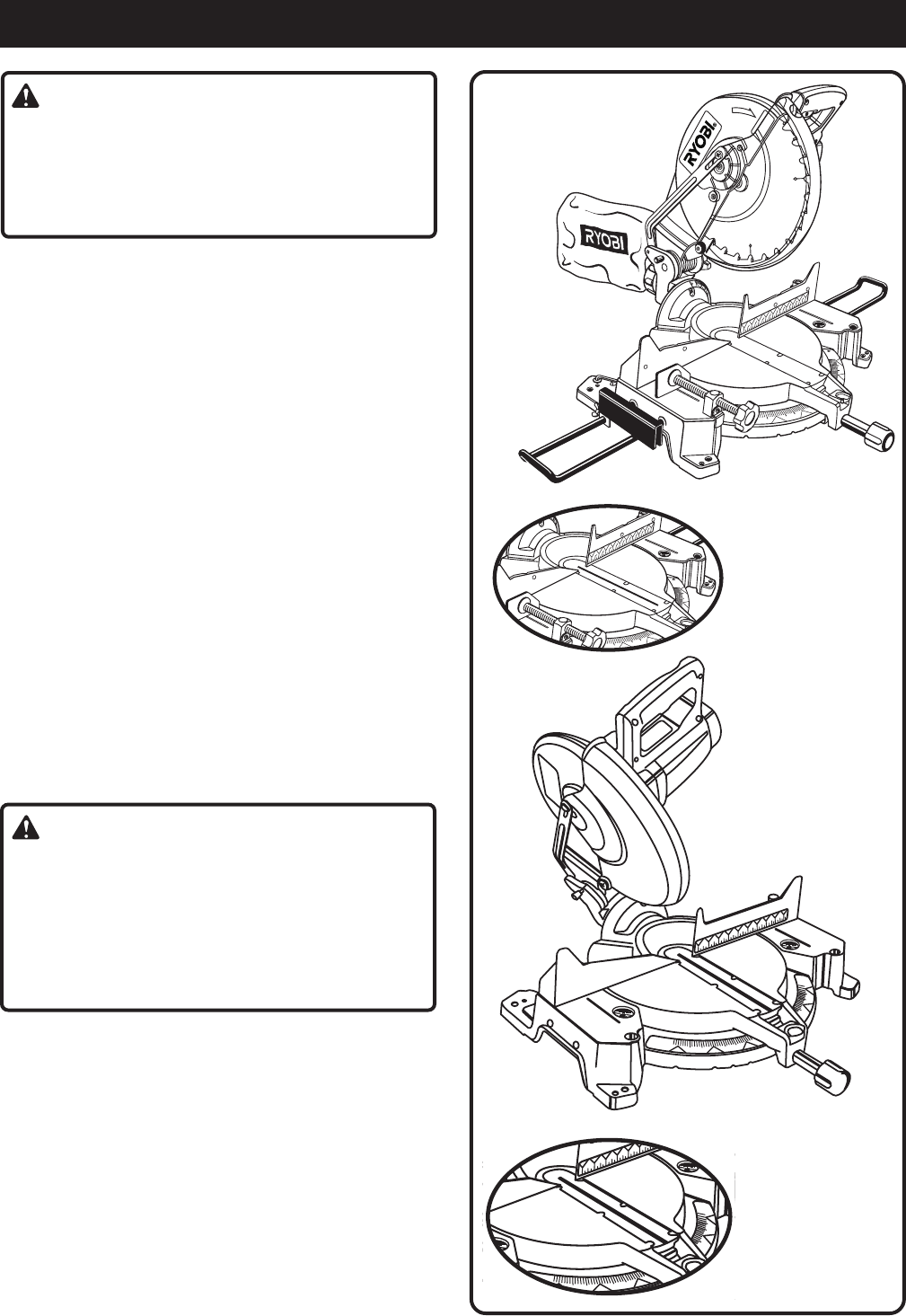
13
OPERATION
WARNING:
Before starting any cutting operation, clamp or bolt
the compound miter saw to a workbench at approxi-
mately waist height. Never operate your miter saw
on the floor or in a crouched position. Failure to heed
this warning can result in serious personal injury.
CUTTING THE THROAT PLATE
See Figure 10.
In order to use the compound miter saw, you must cut a
slot through the zero clearance throat plate to allow for
blade clearance.
Follow these directions to cut the throat plate.
■ Set the saw at 0° miter.
■ Turn on the saw and allow the blade to reach full
speed.
■ Make a straight cut as far as it will go through the
throat plate.
■ Turn off the saw and allow the blade to come to a
complete stop before raising the saw arm.
■ Adjust the bevel angle to 45°.
■ Turn on the saw and allow the blade to reach full
speed.
■ Make another cut through the throat plate.
NOTE: The slot in the throat plate is now wide enough
to allow the blade to pass through it at any angle
from 0 to 45 degrees.
CUTTING WITH THE MITER SAW
WARNING:
When using the work clamp or a C-clamp to secure
the workpiece, clamp the workpiece on one side of
the blade only. The workpiece must remain free on
one side of the blade to prevent the blade from
binding in the workpiece. Binding the blade causes
the motor to stall and kickback, which could cause
an accident resulting in serious personal injury.
CROSSCUT
See Figure 11.
A crosscut is made by cutting across the grain of the
workpiece. A straight crosscut is made with the miter
table set at the zero degree position. Miter crosscuts are
made with the miter table set at some angle other than
zero.
Follow these directions to make a crosscut.
■ Push down on the saw arm.
■ Pull out the lock pin to release the saw arm.
Fig. 10
0 DEGREES
45 DEGREES
AFTER FIRST
CUT
AFTER
SECOND CUT
30
15
3
0
45
1
2
3
4
5
6
7
8
9
10
1
2
1
2
1
2
1
2
1
2
1
2
1
2
1
2
1
2
30
15
30
45
1
2
3
4
5
6
7
8
9
1
0
1
2
1
2
1
2
1
2
1
2
1
2
1
2
1
2
1
2



